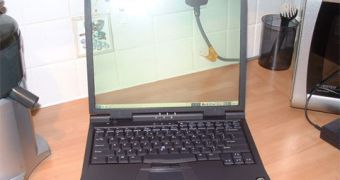Over the last few years, researchers around the world have been working on developing the technology that would allow for the creation of transparent computer and laptop displays, an innovation that could also be applied to windows, or other types of glass materials. What scientists need to make this possible is a certain type of electricity-conductive materials, known as light-permeable coatings. They would allow for electrical current to be transported to the transparent screen without any visible cables, wires, or any other piece of standard electronic equipment.
To some extent, the technology to construct such devices exists, but the costs associated with this new class of displays are prohibited for most businesses to take on by themselves. That's mainly why German electronics experts at the Fraunhofer Institutes for Surface Engineering and Thin Films IST, in Braunschweig, the Solar Energy Systems ISE, in Freiburg, the Silicate Research ISC, in Würzburg, the Mechanics of Materials IWM, and the Photonic Microsystems IPMS, in Dresden, are currently planning to work together to make this a reality as soon as possible.
“Institutes with different types of expertise in the production of coatings have got together to provide the first contact point for conductive transparent coatings,” IST Department Manager Dr. Bernd Szyszka is quoted as saying by PhysOrg. He adds that researchers are currently faced with two possible directions of development. Roughly put, they can either work on improving current production technologies, which rely on printing the coatings on the base material, or they can create a new type of light-permeable coatings, for this purpose alone.
In the first approach, “We have already been able to improve the conductivity of the printed coatings fivefold, which makes them suitable for displays, and we believe we can improve them even further. At present, their conductivity is a tenth of that achieved by conventional coatings,” ISC Project Manager Dr. Peer Lobmann explains. As for the second approach, he adds that, “Conventionally, the transparent coatings have been n-conductors. But in these semiconductors, electrons carry the current flow. We are developing transparent coatings made of p-conducting materials, in which moving gaps between the electrons conduct the current.”

 14 DAY TRIAL //
14 DAY TRIAL //